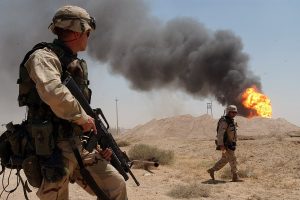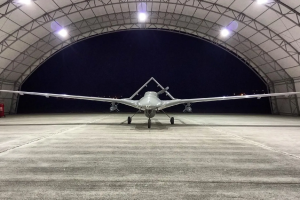by Erkam Tüzgen
Two nations stand out on the international scene for their approaches to humanitarian and military interventions: Türkiye and the United States. One, a rising regional power balancing security and diplomacy; the other, a global superpower pursuing far-reaching ambitions. While both engage in interventions, the methods, outcomes, and public perceptions of their actions could not be more different.
Two Motivations, Two Approaches
The United States intervenes with global strategic interests—energy resources, ideological battles, and geopolitical influence—driving its decisions. From Afghanistan and Iraq to Vietnam, U.S. interventions are often shaped by long-term power struggles and military dominance.
Türkiye’s approach, however, is more targeted and multi-faceted. In Syria and Iraq, its interventions focus on regional security, border protection, and counterterrorism. In places like Libya and Somalia, Türkiye combines geopolitical pragmatism with humanitarian and developmental goals. Libya serves as a key arena for securing Türkiye’s energy and maritime interests, while Somalia highlights Türkiye’s long-term investment in African stability and partnership through aid and infrastructure.
This blend of security, diplomacy, and soft power sets Türkiye apart from the conventional intervention strategies we are used to seeing.
SHORT-TERM RESULTS: DİFFERENT PRİORİTİES, DİFFERENT OUTCOMES
U.S. Interventions
The U.S. excels at achieving immediate military goals. Regimes collapse, adversaries are defeated, and new authorities are installed—at least on paper. Yet these swift victories often open the door to power vacuums, as seen in Iraq and Afghanistan, where chaos and insurgencies quickly take root. For local populations, the aftermath is brutal: destroyed infrastructure, mass displacement, and economic ruin.
Türkiye’s Interventions
Türkiye’s operations, though smaller in scale, prioritize stability and localized results. In Syria, Türkiye’s creation of safe zones along its border pushed back terrorism, reduced refugee pressure, and offered a degree of stability for civilians. In Libya, Türkiye’s support for the legitimate government helped restore a fragile balance of power, while strengthening Türkiye’s strategic position in the Mediterranean.
In Somalia, Türkiye’s focus on humanitarian aid and development—through building schools, hospitals, and infrastructure—delivers immediate benefits to the local population and builds long-term goodwill.
THE LONG GAME: STABİLİTY VS. CHAOS
U.S. Interventions
Over the long term, U.S. interventions tend to leave countries fractured. Iraq and Afghanistan stand as stark examples: decades of U.S. presence have resulted in prolonged political instability, ethnic and sectarian divides, and the resurgence of extremist groups. Anti-American sentiment festers as the local population views U.S. actions more as occupation than liberation.
Türkiye’s Interventions
Türkiye, by blending hard power with soft power, leaves behind tangible and sustainable outcomes. In Syria, cross-border terrorism was significantly reduced, while millions benefit from relatively stable safe zones. In Africa, Türkiye’s investments in Somalia have transformed the country into a success story of partnership, where Türkiye is seen as an ally and builder rather than an occupier.
In Libya, Türkiye’s involvement has strengthened its maritime influence while contributing to a longer-term political balance. By focusing on diplomacy and development, Türkiye’s interventions create stability that benefits both its own interests and local populations.
Perception: Winning Hearts vs. Losing Trust
U.S. interventions often leave a legacy of destruction and resentment. Despite initial military victories, the inability to rebuild and stabilize societies fosters distrust and hostility. Countries like Iraq and Afghanistan remain cautionary tales of intervention without long-term planning.
Türkiye’s interventions, on the other hand, are more focused on building trust. By prioritizing humanitarian aid, infrastructure, and education alongside security goals, Türkiye leaves behind visible improvements. In places like Somalia and Libya, Türkiye is welcomed as a partner, not an occupier—earning respect and goodwill among local populations.
What Can We Learn?
The outcomes of Türkiye’s and the U.S.’s interventions offer a valuable lesson: the methods and motivations behind interventions matter. While the U.S. leverages overwhelming military power to serve global ambitions, Türkiye’s more focused approach seeks to balance security, diplomacy, and development.
This is not to say Türkiye’s approach is without challenges. Military operations carry risks, and economic costs remain significant. Yet Türkiye’s strategy demonstrates that intervention can be about more than just defeating enemies—it can also be about rebuilding societies and forging lasting partnerships.
History will judge interventions not by what was destroyed, but by what was built. Türkiye’s model—grounded in pragmatism, humanitarianism, and strategic foresight—shows that strength, when combined with compassion, can create a better future for all.
This column reflects the author’s views on Türkiye’s growing role as a builder of regional and global stability.






